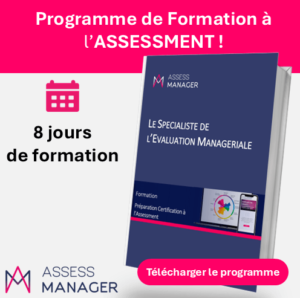Manipulating recruitment tests – an easy exercise?
Every test we take gives us the impression that we can more or less manipulate the results. But beware..
Sometimes it’s true for the submerged part of the iceberg, but it’s not true for the whole submerged part… Why?
Tests are not all designed in the same way, but clarifying certain points will enable you to make your choices about the stakes/consequences of an attempt to manipulate tests – the keys to your thinking!
Let’s take an example:
You want to be recruited for a position as project manager and you want to project an image of someone who is rigorous, organised, knows how to anticipate, manage a back schedule, etc
The recruitment agency that is interviewing you gives you a test with a surprising, even bizarre question!

Do you prefer:
- pink
- black
How do you answer?
- Some people will have the impression that pink means optimism
- And, by contrast, will associate black with sadness
Probably… But in reality, it’s all a question of perceptions..
- Pink could also be interpreted as sensitivity, warmth
- Black, detachment, cold
Or even
- Pink for creativity
- Black for organisation
I’m not a specialist in interpreting colours, and I’m sure you’re not either.
In any case, you should know that many recruitment tests can be interpreted on several levels. You can see how this example can lead us astray..
Your reading and interpretation of colours, as a good “sorcerer’s apprentice” of interpretations, led you to the first reading: I choose pink to give an image of an optimistic person.
Perfect, you certainly handled the test well on the first level!
By choosing pink, you also chose sensitivity and creativity. It’s hard to measure all the other potential relationships..
Perhaps you should have chosen black after all..
That’s debatable! The project manager must also be creative in finding solutions to unforeseen problems.
In the end, was there a good answer?
You realise that the only good answer is your own, the one that answers the question “Who are you?
Because in both cases, this answer led to a potentially positive interpretation for the job. Perhaps it’s better if the answer is simply like you. Because, in addition to wanting to land a job, you probably also want to feel fulfilled in this position..
Let’s move on from the story of the pink and the black, and the project manager if you will. The example is totally fictitious and certainly highly debatable when it comes to interpreting colours!
Let’s refocus on the original question: Handling recruitment tests – an easy exercise?
Let’s rather say:
Manipulating recruitment tests – a risky exercise that can backfire..
Here is a summary of some of the biases involved in trying to manipulate tests..
- In a recruitment test, what seems obvious to us in terms of interpretation is biased by our filters (educational, beliefs, etc.) and our way of reading/interpreting a word or group of words
- Behind an assessment that seems obvious to us, there are other underlying assessments that we cannot control – by skewing the results, we start to play poker..
- By highlighting a quality in a recruitment test that we think is required for a job, we are distorting our personality; and without wanting to, without knowing it, we are taking the risk of masking another quality that may be required for the job and that is more important than the one initially identified.
- And finally, recruiters have a number of qualities, not least a certain amount of discernment… If they detect that you have tried to hide a flaw, they will see an attempt at manipulation. Companies are often looking for reliable and trustworthy employees.

To go further with Assess Manager


